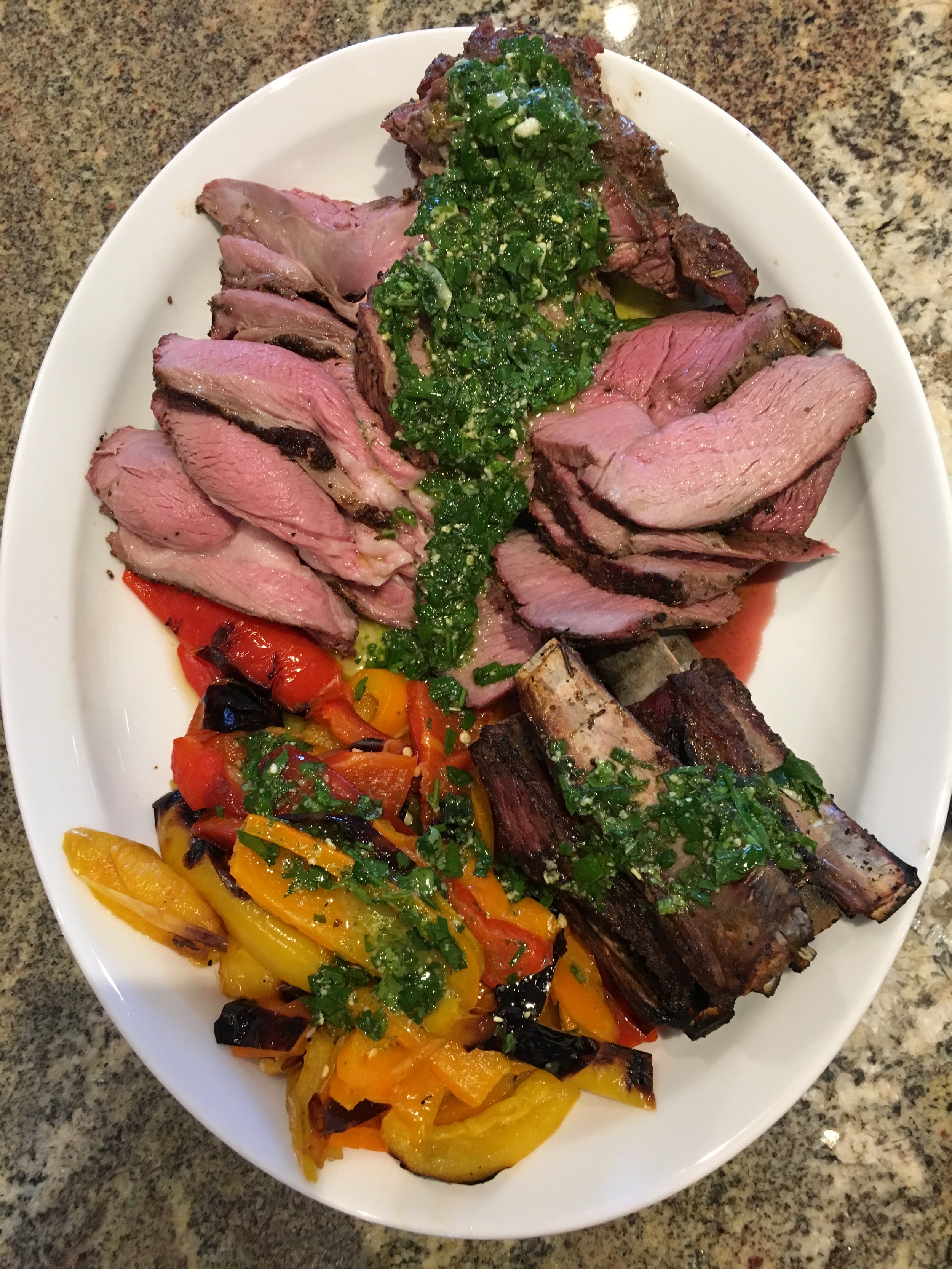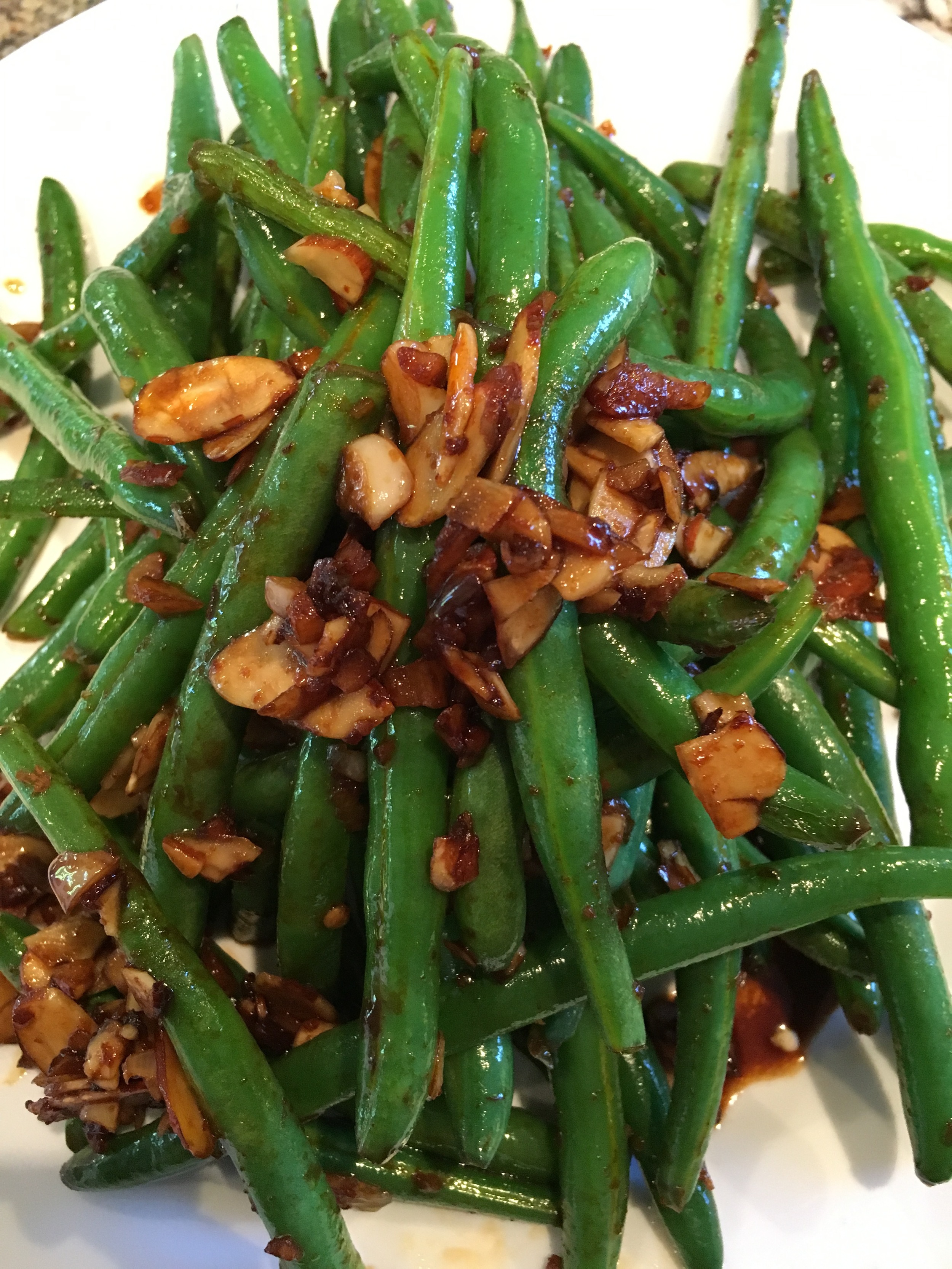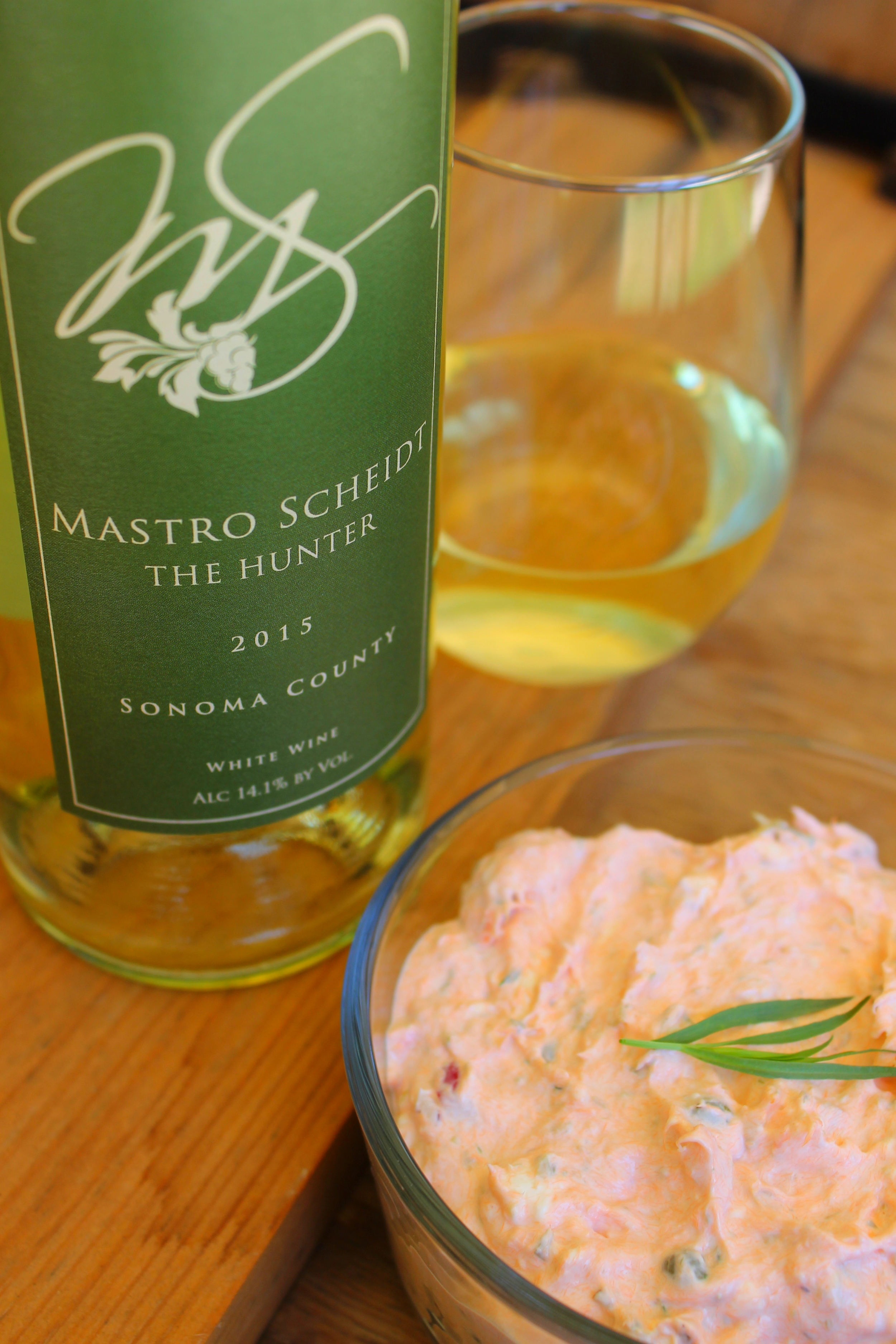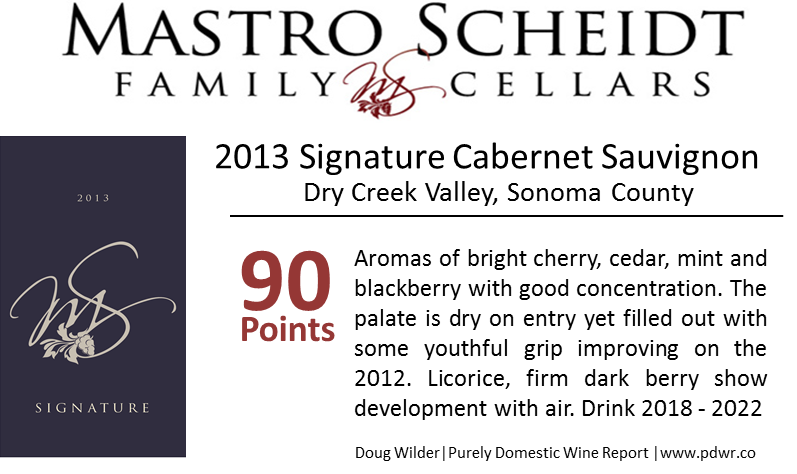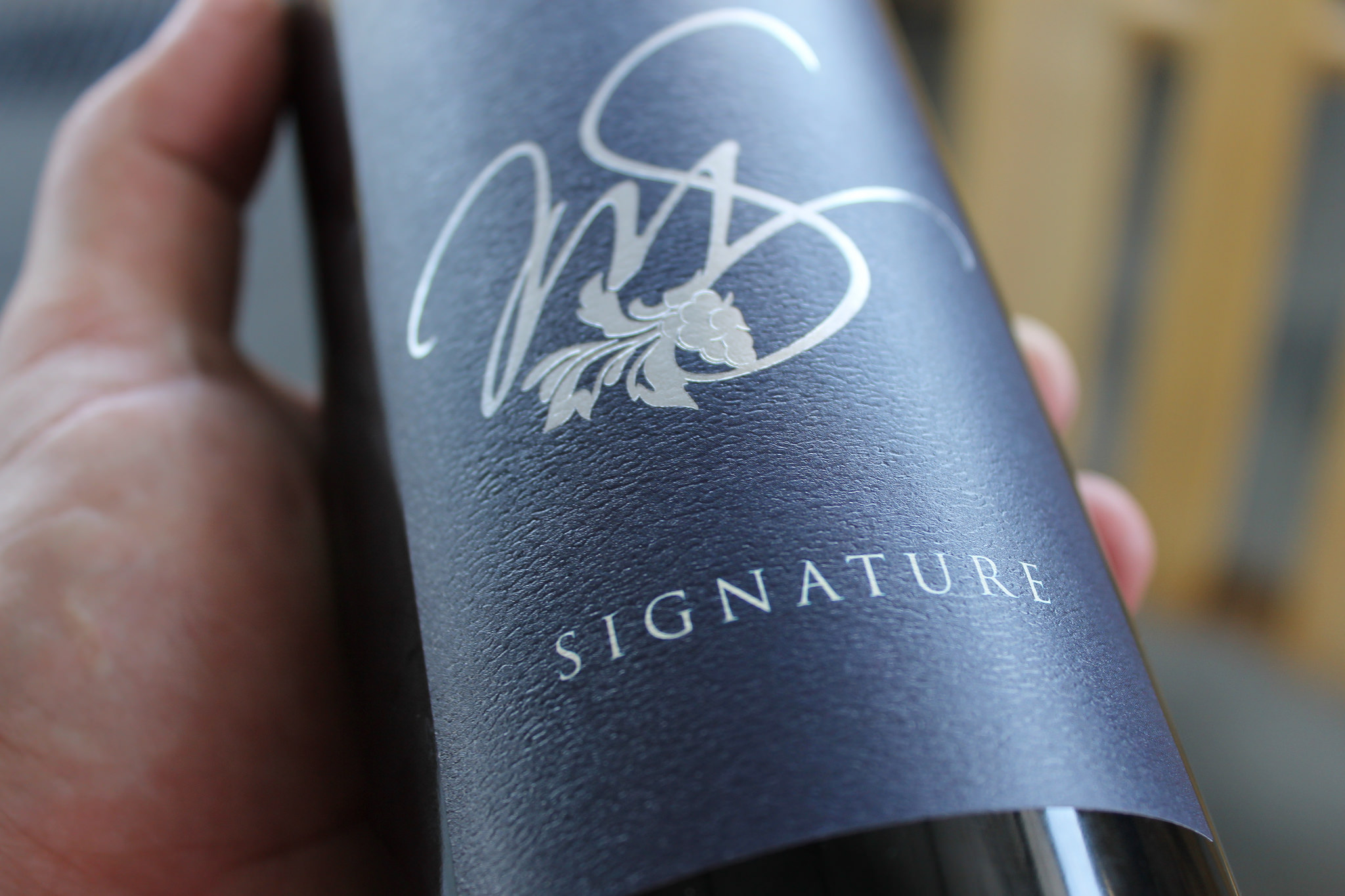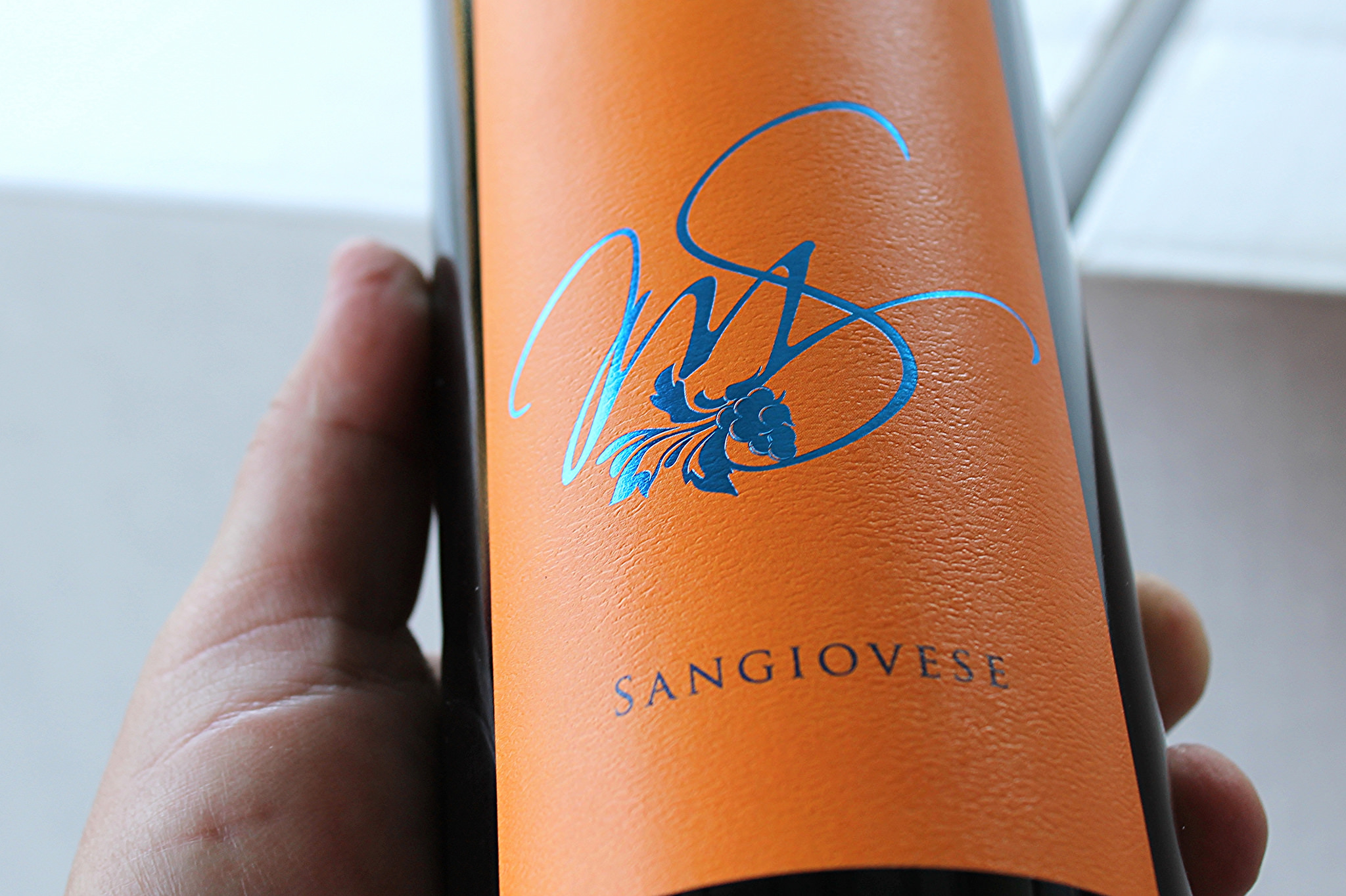My friends and I have been sous vide crazy this summer. We've even tried to sous vide an artichoke (not that I'd recommend it).
I didn't do much cooking for this dinner, I have childhood friend John to thank for the sous vide lamb. Lamb leg was the next logical candidate for the sous vide machine. Leg of lamb generally has a long, slow cooking time anyway, so it makes sense to use a little science and cooking together. There is no real recipe for sous vide leg of lamb, other than cooking time, which was 9 hours. We finished it on a charcoal fire for some color and additional flavor.
Sous vide lamb leg with roasted peppers
For me, what made the entire meal pop were the green beans. Chinese influenced green beans were the contrast to all the richness in the meal. The salty umami heat in the sauce made me want to have another bite of lamb and another sip of Zinfandel. It was a virtuous circle of eating.
I can't take credit for the green beans, John's wife Falina prepared the dish, in addition to the roasted potatoes, one style with feta the other with proscuitto.
Pan fried green beans with slivered almonds and chili sauce
1 package Fresh green beans (you know, the ones that come in the bag, cleaned)
1 tablespoon Fresh chopped garlic
1/4 cup Shaved almonds
3 tablespoons Soy sauce
1 tablespoon Chili paste
3 tablespoons Canola or Peanut Oil
Blanche your green beans in boiling, salted water for about 30 seconds.
Have a large, hot saute pan ready to combine all the ingredients above for a quick, high heat saute (unless you're lucky enough to have a commercial wok in your house). The saute pan should NOT be overloaded with green beans. It's better for this dish to split the green beans in two or three batches, so that the pan stays screaming hot and the cooking process stays hot, this is wok-style cooking in a non-commercial home kitchen.

